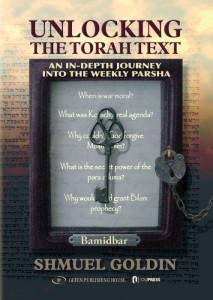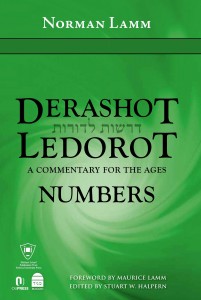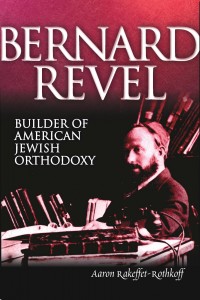Excerpted from Unlocking the Torah Text –Bamidbar by Rabbi Shmuel Goldin, co-published by OU Press and Gefen Publishers

Context
Conflicting signals mark the Torah’s attitude towards a man or a woman who vows to become a Nazir and thus accepts the personal obligation to refrain from
1. Consumption of wine, grapes and any grape product
2. Haircuts
3. Any defiling contact with a human corpse
On the one hand, the Torah emphatically states, “All the days of his nezirut, sanctified is he to God.”
On the other hand, if the Nazir comes into inadvertent, unavoidable contact with death, the Torah maintains that he must “atone” for his sin.In addition, upon completion of the term of his vow, every Nazir is commanded to bring, among other korbanot, a sin offering.
Questions
How does Jewish thought view a Nazir? Is the adoption of additional stringencies in the quest for holiness considered praiseworthy or not?
Why must a Nazir atone for circumstances beyond his control, in the case of unavoidable, inadvertent contact with death? Even further, why must every Nazir bring a sin offering upon completion of the term of his vow? Is this offering an indication of the Torah’s disapproval of the original vow of nezirut?
If nezirut is less than optimal, why is it offered as an option in the Torah? If, on the other hand, nezirut is praiseworthy, why isn’t this status mandatory for all?
Approaches
A
The textual hints of attitudinal ambivalence towards the Nazir emerge as full-blown debate in rabbinic literature. At the core of the argument lies the broader question: How does Jewish thought, in general, view the ascetic, someone who voluntarily abstains from that which God permits?
In a philosophical battle that rages across the ages, the sages map out widely divergent positions concerning the search for sanctity in a physical world. What follows is a representative – albeit far from exhaustive – sampling of their opinions.
B
A foundational Tannaitic dispute, quoted in the Talmud, sets the stage for the multigenerational discussion.
Rabbi Elazar Hakapar maintains that the Torah refers to a Nazir as having sinned because the individual unnecessarily deprives himself of the pleasure of drinking wine. “If an individual who deprives himself of wine is a sinner,” this sage concludes, “how much more so is someone who deprives himself of all pleasures? We therefore learn that an individual who voluntarily fasts is considered a sinner.”
Rabbi Elazar (ben Shammua, not to be confused with Rabbi Elazar Hakapar) draws the opposite conclusion. The Torah clearly describes the Nazir as sanctified. “If someone who deprives himself of wine is considered holy,” this sage argues, “how much more so is someone who deprives himself of all pleasures? We therefore learn that an individual who voluntarily fasts is considered holy.”
The Talmud goes on to explain, however, that even Rabbi Elazar limits his encouragement of abstinence to those who can bear the burden without undue suffering.
Other Talmudic sages weigh in on both sides of the debate.
C
As seen by the conclusions they draw, Rabbi Elazar Hakapar and Rabbi Elazar do not confine their debate to the case of nezirut. At issue is the overall question of asceticism within Jewish tradition. How does Judaism, they ask, a religion that generally embraces the physical world view those who wish to retreat from it? Can such retreat result in the attainment of greater spiritual heights or is abstinence a fundamentally aberrant path? Furthermore, are the answers to these questions consistent across the board or dependent on the makeup of each individual?
Centuries later, in his halachic magnum opus, the Mishneh Torah, the Rambam clearly adopts the position of Rabbi Elazar Hakapar on this fundamental issue:
A person should not say, “Behold: envy, desire, honor and the like are evil paths…; I will separate myself from them completely,” to the point where he will not eat meat or drink wine, will not marry, will not live in a beautiful dwelling, will not wear nice garments; but instead wears sackcloth, rough wool and the like, as do the priests of the nations.
This, as well, is an evil path upon which it is forbidden to travel; and one who travels this path is considered a sinner, for the text states: “And he [the Kohen] shall provide him [the Nazir] atonement for having sinned concerning the soul,” and the rabbis further maintain: “If a Nazir, who only separates himself from wine, requires atonement, how much more so does someone who abstains from many things [require atonement]?”
Therefore, the rabbis instruct that an individual should not abstain except from those things prohibited to him by Torah law [my italics]….
And concerning these issues Shlomo [King Solomon] proclaimed: “Do not be overly righteous nor overly wise; why should you destroy yourself?” (Kohelet 7:16).
Nonetheless, in spite of this clearly stated position in opposition to asceticism as a lifestyle, the Rambam does defend the institution of nezirut in his Guide to the Perplexed:
The purpose of nezirut is obvious: it provides for abstention from wine, a substance that has ruined lives in both ancient and modern times….
For he who abstains from wine is considered holy and is placed on the level of a Kohen Gadol in terms of sanctity, to the point where he may not defile himself, even [upon the death] of his mother or father. This is the honor granted to him because he abstains from wine.
The Rambam fails to clarify, however, how he considers the Nazir to be, at once, both a sinner (as he notes in the Mishneh Torah) and a sanctified individual (as he notes in the Guide to the Perplexed).
D
In stark contrast to those who consider the Nazir “sinful” for having restricted himself from that which is normally allowed, the Ramban adopts the position that nezirut is a totally laudatory state.
The sin offering brought by the Nazir at the end of his period of abstinence, the Ramban explains, is far from a negative comment on the state of nezirut. It is, in fact, exactly the opposite – a reflection of this state’s loftiness:
This individual sins to his soul on the day of the completion of his period of nezirut, for he now is a Nazir in his sanctity and in the service of God, and it would have been appropriate for him to separate forever and remain all his days a Nazir and sanctified to his God….And behold he now requires atonement upon his return to the defilement of earthly temptations.
In a bold move, the Ramban thus redefines the entire thrust of the sin offering at the end of the Nazir’s term. A Nazir requires atonement, this sage maintains, not for entering the state of nezirut, but for leaving its sanctified confines.
E
Numerous other commentaries offer their own solutions to the apparent contradiction between the Torah’s identification of the Nazir as both “sanctified” and “sinful.”
Rabbi Moshe Isserles (the Rema), for example, views the experience of nezirut as a spiritually curative process, in line with the Rambam’s general prescription for positive behavior modification.
The Rambam maintains that in order to arrive at a healthy behavioral middle road, there are times when individuals must temporarily go to extremes. Someone who has a tendency towards haughtiness and pride, for example, should debase himself for a period of time. Through this exercise, all haughtiness will be driven from his system and he will be able to return to the desired middle road.
In this vein, says the Rema, the Torah prescribes nezirut for someone who recognizes in himself the tendency to succumb to earthly pleasures. By temporarily adopting the extreme path of abstinence, this individual will train himself to eventually attain proper life balance.
The Torah’s description of the Nazir as sanctified, the Rema explains, refers to his condition after the period of nezirut is concluded. Through the vows of nezirut, the Nazir enters a temporary period of extremes (and all extremes are inherently “sinful”) in order to ultimately reach a “sanctified” equilibrium.
Agreeing with the Rema’s vision of nezirut as an exercise in positive behavioral modification, Rabbi Meier Simcha HaCohen of Dvinsk explains a strange choice of wording in the Torah’s description of the end of the nezirut period. The text states: “And this is the law of the Nazir, when the days of his nezirut are fulfilled, he shall bring himself to the entrance of the Tent of Meeting.”
Why does the Torah make use of the cumbersome construction “he shall bring himself”? Why not simply state, “he shall come”?
Rabbi Meier Simcha explains that the fundamental purpose of nezirut is to cure an individual of his tendency towards lust, pride and excess. The Torah, therefore, mandates no specific length to the nezirut period. Each individual must determine for himself how long he must remain in this “corrective” period of nezirut in order to achieve the desired goals. The Nazir thus “brings himself”; he alone determines exactly when he should come to the doors of the Tent of Meeting.
Concerning the sin offering brought at the end of the Nazir’s tenure, Rabbi Meier Simcha offers an intriguing theory. The adoption of nezirut is not a sin, he suggests, but does create, by necessity, other ancillary sins of omission. During the time of his nezirut, the Nazir was proscribed from performing specific mitzvot such as the mitzva of honoring his dead (due to the nezirut restrictions concerning contact with death) and the mitzvot of Kiddush and Havdala over wine (due to the prohibitions concerning consumption of grape products). Although the acceptance of his nezirut may well have been positive, the Nazir still must atone for the mitzvot that he consequently missed.
The Netziv maintains that God Himself will sometimes “weigh in” concerning the judgment to be passed on a particular Nazir. As proof, this sage focuses on the atonement required of a Nazir upon inadvertent contact with death. Why, asks the Netziv, should a Nazir be culpable for an unavoidable situation that arises, in the Torah’s words, with “quick suddenness”? The Netziv therefore argues that, in reality, the Nazir atones, not for the contact with death that was beyond his control, but for his original decision to become a Nazir and deprive himself of wine. Such abstinence can be commendable, but only for the select few who are worthy of attaining a higher level of sanctity. By placing this particular Nazir in a situation of unavoidable contact with death, God sends a divine sign that this individual is unworthy of being a Nazir. The individual must therefore atone for unnecessary self-denial in what has been a flawed attempt to attain a status beyond his reach.
Finally, the Kli Yakar, in one of a number of approaches, views the Nazir’s sin from a societal perspective. Quoting the Talmudic statement “Anyone who vows is considered to have built a personal altar [a practice forbidden by Jewish law],”18 this scholar chastises the Nazir for separating himself from the community. By denying himself that which others are allowed, the Nazir embarks upon a search that is inherently isolating.As we have noted before, from the perspective of Jewish thought, connection to and involvement with the surrounding community is essential. Any religious path that breeds isolation is, as a rule, fundamentally flawed.
F
Yet other commentaries maintain that the mindset of the Nazir is the ultimate determinant of the value of his vow.
The Ohr Hachaim, for example, views the text itself as distinguishing between two different types of nezirut:
1. Nazir: Someone who accepts nezirut out of a personal predilection for an ascetic lifestyle.
2. Nazir La’Hashem (to God): Someone who accepts nezirut for the appropriate purpose of drawing near to God.
In a similar vein, The Chatam Sofer differentiates between the Nazir who, mistakenly, views asceticism as a goal unto itself and the Nazir who, appropriately, views nezirut as a means to an end.
To these and other like-minded scholars the message conveyed by the textual ambivalence towards the Nazir is clear: “It depends.” An individual who embarks upon the path of nezirut for the appropriate reasons is “sanctified,” while an individual whose motivation is faulty is “a sinner.”
G
When all is said and done, the most basic questions concerning nezirut still remain largely unanswered: Given the controversy surrounding these laws, why does the Torah offer nezirut as an option in the first place? Why not simply insist that all individuals find meaning and significance within the complex decrees that are already commanded to all Jews?
The answer to these questions reveals the brilliance of Torah law as it continues to strike a delicate balance between man’s initiative and God’s will.
On the one hand, nezirut reflects God’s recognition of the need for “safety valves” within the structure of ritual worship. There will always be those, the Torah acknowledges, for whom the norm will not be sufficient – individuals who will aspire to a different, perhaps loftier path. And while, as we have seen, such aspirations are of questionable merit, nezirut provides the necessary structure within which these individuals can pursue their personal objectives.
There is, however, a catch….
For if nezirut provides a channel for individual religious expression, this very same phenomenon also clearly limits such expression. Counterintuitively, the Torah denies the Nazir the right of self-determination in his religious search.
In effect, God declares to the would-be Nazir: You desire to move beyond the law, to be the exception governed by standards all your own? I will allow you to do so. If I attempt to stifle your initiative, if I deny you an avenue within the system, your need to be different may well find expression in other, less productive ways.
Just one point, however. As you leave the box that governs the behavior of those around you, here is the new box into which you must move; here are the new laws that you must now observe. For, within the world of My Torah, even those who would travel beyond the law will be governed by the law.
Ultimately you must remember that I, not you, make the rules….
Points to Ponder
As our discussion has shown, the jury is still out concerning nezirut. Unlike other faith traditions that view asceticism as a goal, Judaism views the path of abstinence with caution. Under certain circumstances, for specific individuals and with the right motivation, temporary self-denial and social seclusion can sometimes lead to a heightened state of sanctity. As a rule, however, on a day-to-day basis, sanctity is to be found through connection to the community and within the context of the physical world.
Jewish tradition’s ambivalence towards nezirut and the lifestyle that it represents should give us pause as we consider the nature of our own communal religious posture. Two areas of query can provide the framework for our brief self-analysis:
1. Is the adoption of greater ritual stringency necessarily always synonymous with deeper religiosity?
2. Given the clear value placed by our tradition upon belonging to the whole, shouldn’t the search for communal harmony factor into our halachic decisions, as well?
These questions acquire greater urgency against the backdrop of growing conflict between the increasingly strident Charedi and the increasingly alienated secular communities in Israel. With growing frequency, as these societies drift further apart, Jews perceive other Jews as opponents rather than as allies, as problems rather than as partners. The voices of moderation and pride-filled cooperation, once so strongly represented by the National Religious camp, seem strangely weak and silent.
Can a halachically true model of religious observance be attained in Israel that engenders harmony rather than hostility? Can a measure of respect for that observance still be regained among those who feel so deeply disenfranchised?
The answers to these questions will determine, in great measure, the future viability of the State of Israel.








